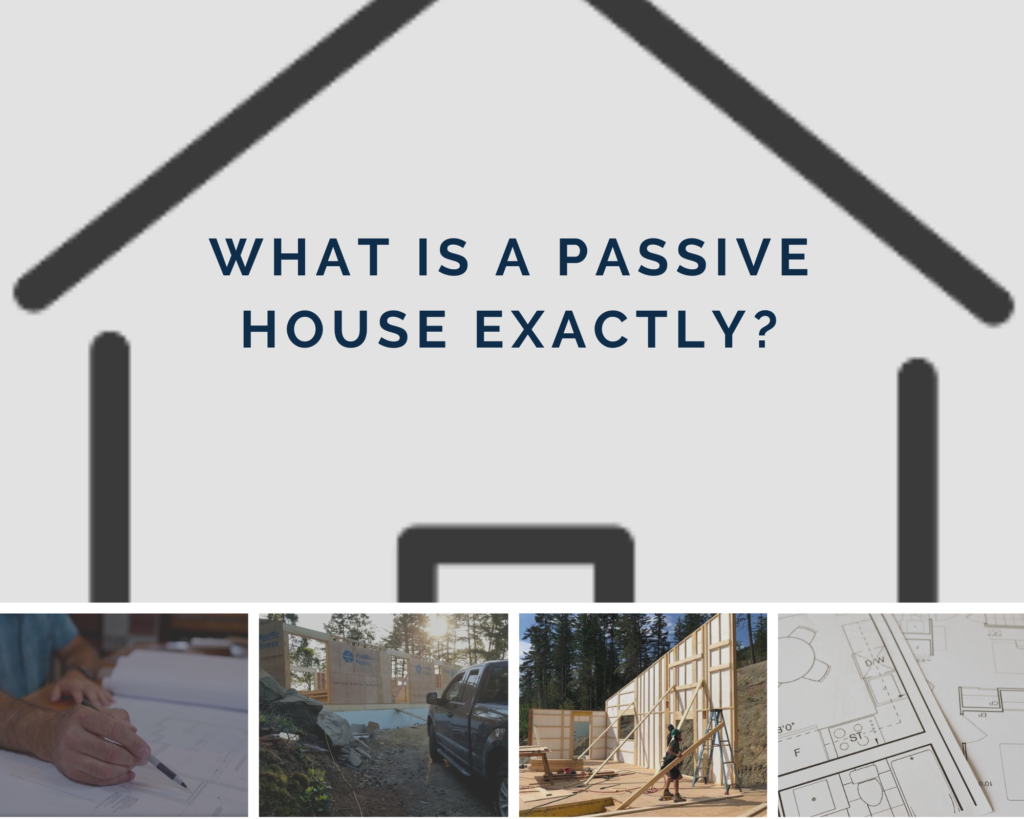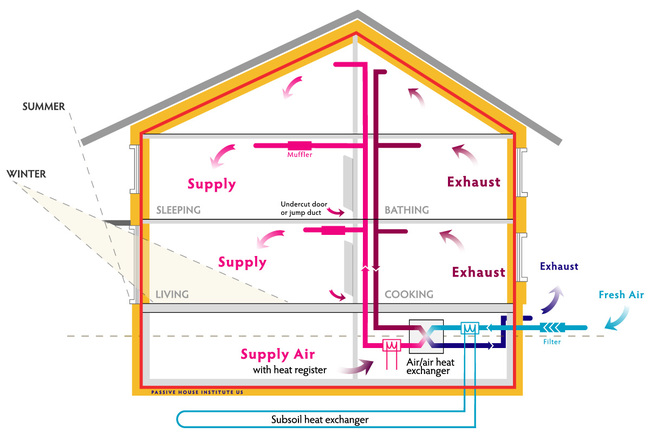
Passive House is a high-performance based building standard that was developed in Europe. It focuses on reducing or eliminating the need for an active heating or cooling system to maintain a comfortable interior climate. This is achieved through an efficient design that utilizes passive heating and cooling techniques and an optimized building envelope that is airtight, super-insulated, fitted with energy-efficient windows & doors and a heat recovery ventilation system (HRV). The building must embody a set of specific practices that seal it from outside temperatures while maintaining a stable inside temperature and high air quality. When building a home, it is important to consider whether it will meet all of the building requirements. The Passive House building standard is one of the highest building standards available today. Compared to homes built to the BC Building Code or the BC Energy Step Code, Passive Homes are already “net-zero energy ready.”
The Passive House standard:
- Results in a more comfortable, quiet, and healthy home
- Is an effective means of meeting our Zero Emissions Building Plan targets

Wood is an attractive material for Passive Homes because of how it combines thermal mass with a number of performance merits, including water resistance, structural integrity and finish quality. Wood is often the material of choice for prefabricated designed panels and our Pacific SmartWall® Technology is a proven system that can help you achieve a high-performance home. The certification is a rigorous quality assurance process that determines whether a building meets all of the requirements of the standard. More importantly, it confirms that the building has been designed to achieve high levels of occupant comfort, and health and energy performance.
The primary criteria for achieving certification:
- Space Heat Demand: Maximum 15 kWh/m²a or heating load maximum 10 W/m²
- Air Tightness: Maximum 0.6 ACH @ 50 Pa (pressurizing and depressurizing)
- Total Primary Energy Renewable (PER): Maximum 60 kWh/m²a
A Passive House explained in 90 seconds!
Resources:
To read more about the BC Energy Step Code.
To read more about the fundamentals of the Passive House standard.
